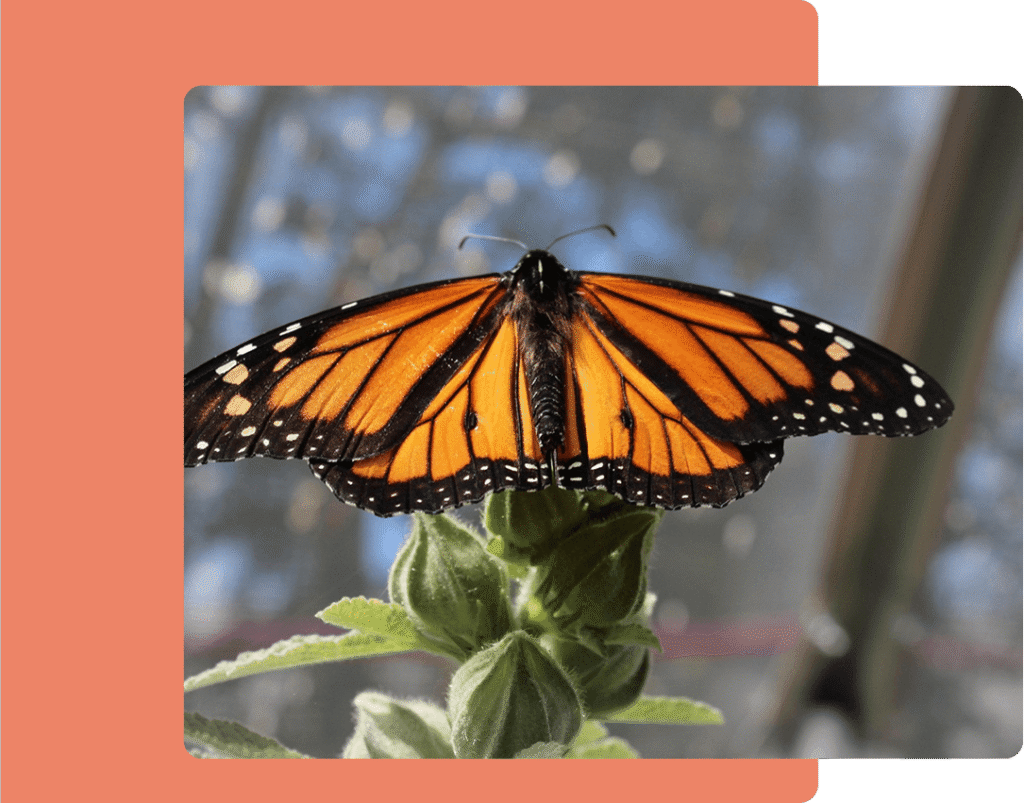The monarch butterfly is a bright orange-and-black insect that’s easy to spot fluttering through gardens and fields. It’s best known for its amazing migration that covers thousands of miles each year.
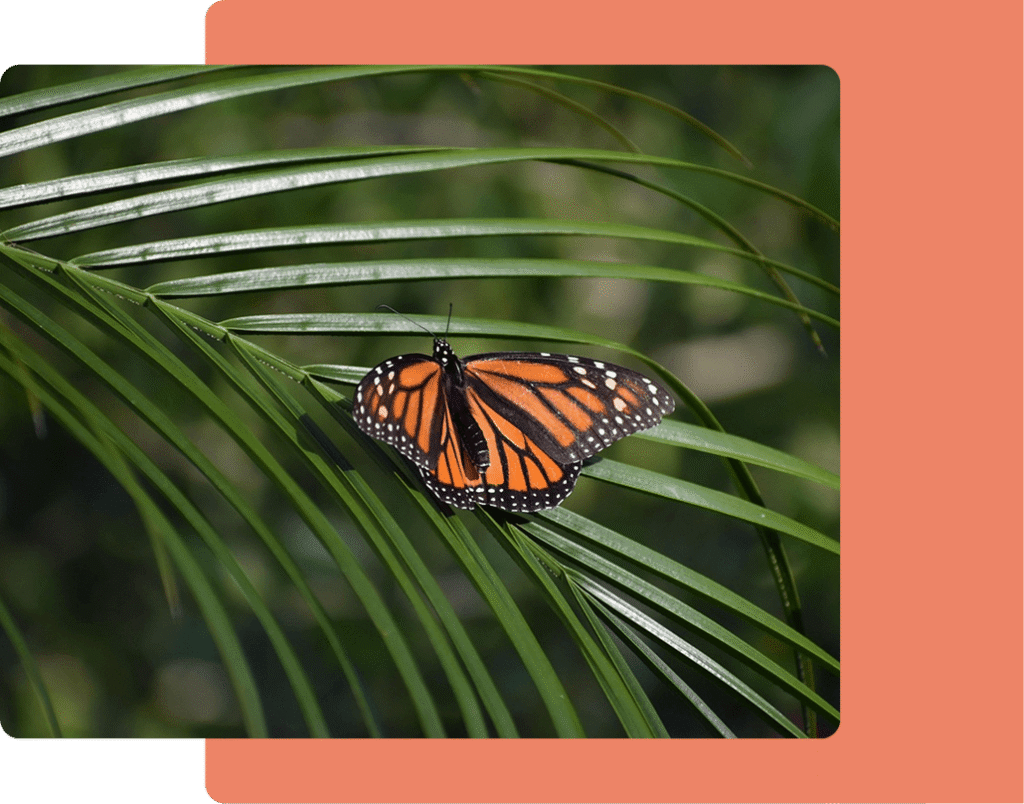
Monarchs live across North America, from Canada to Mexico. You’ll find them in open areas with flowers and milkweed—like meadows, fields, parks, and even sunny backyard gardens.

Monarchs fly from flower to flower, drinking sweet nectar and spreading pollen. They also lay their eggs only on milkweed plants, which their baby caterpillars need to grow and survive.
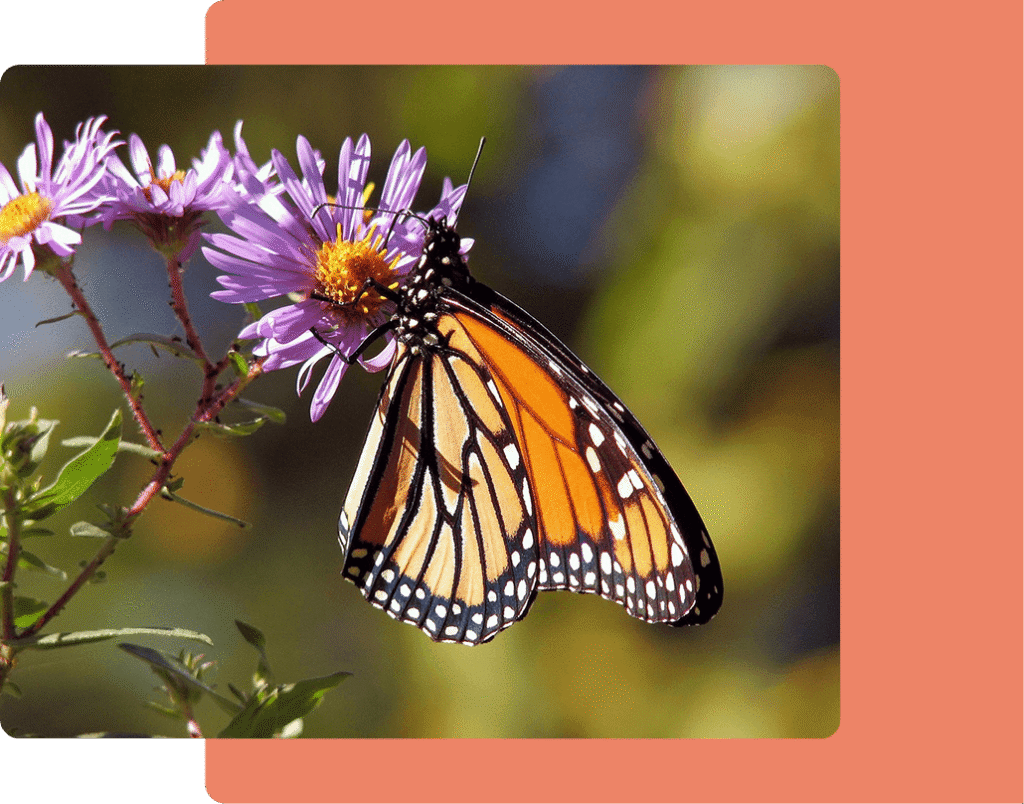
Monarchs lay their eggs on milkweed plants. After hatching, caterpillars eat milkweed, turn into a chrysalis, and finally become butterflies. It’s nature’s version of a magical costume change.
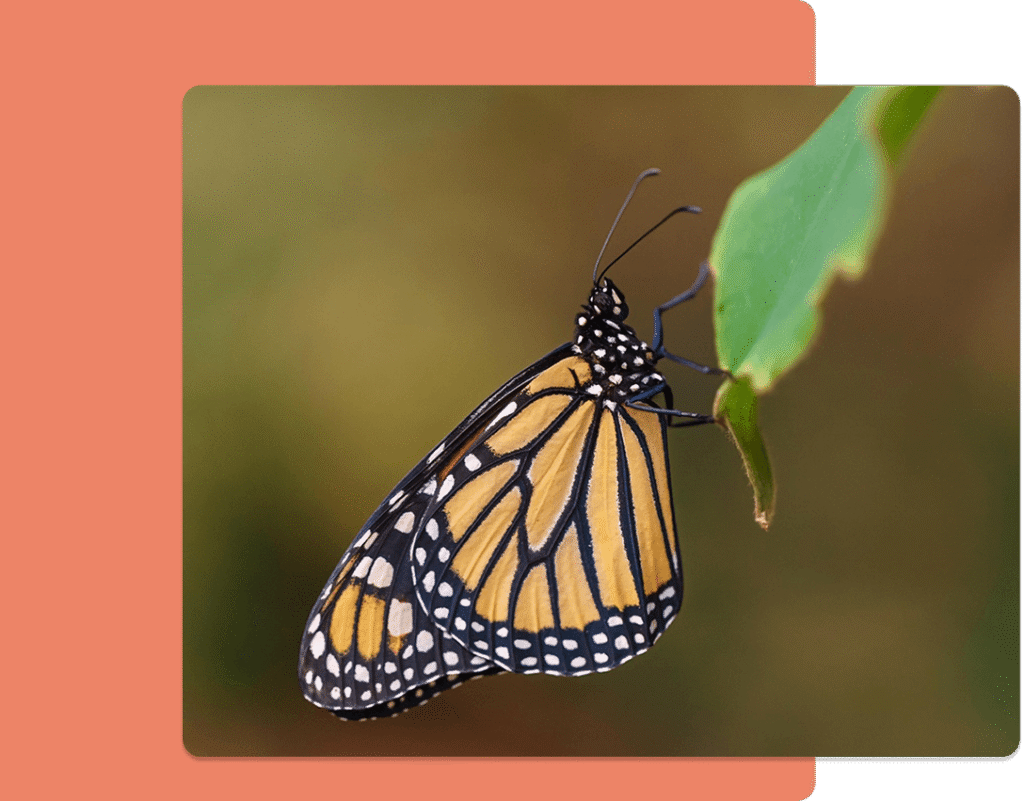
Monarchs migrate over 2,000 miles without a map. Their bright colors warn predators they taste bad. And even though they’re small, they’re tough enough to cross entire countries.
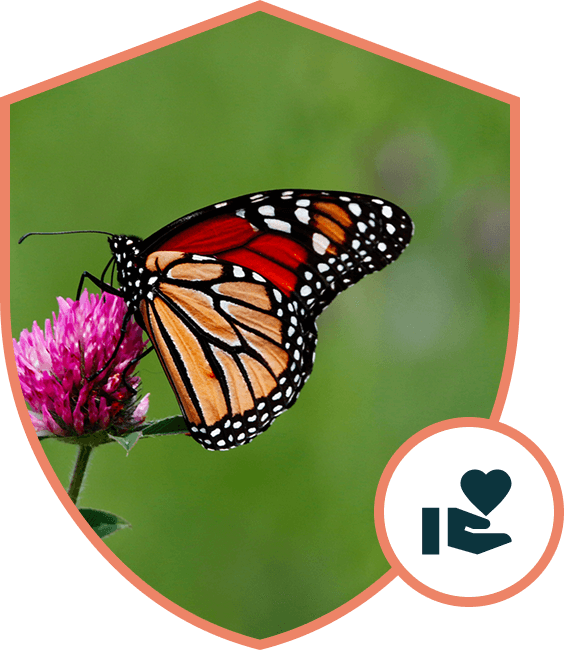
Monarchs pollinate plants and help nature grow. When they start disappearing, it’s a sign that the environment is in trouble—and that means problems for people, too.
